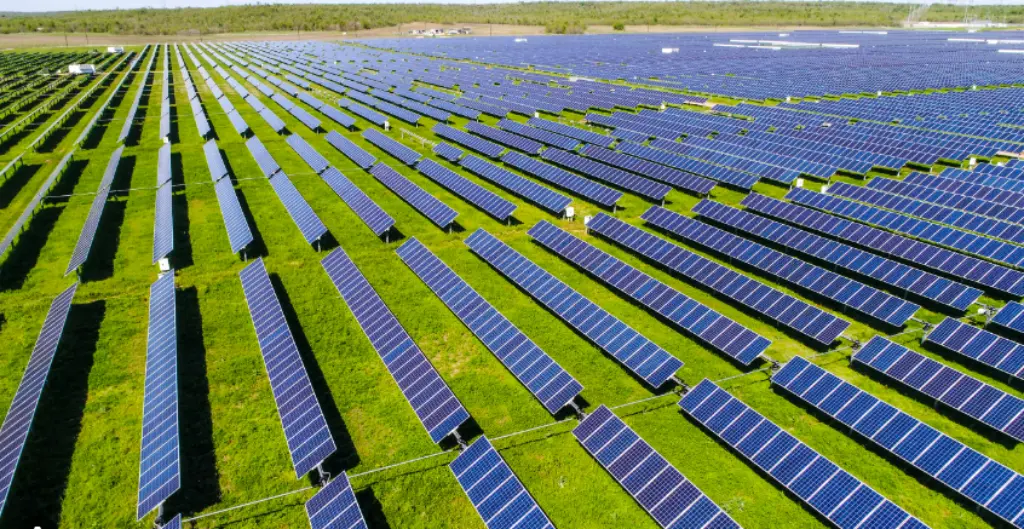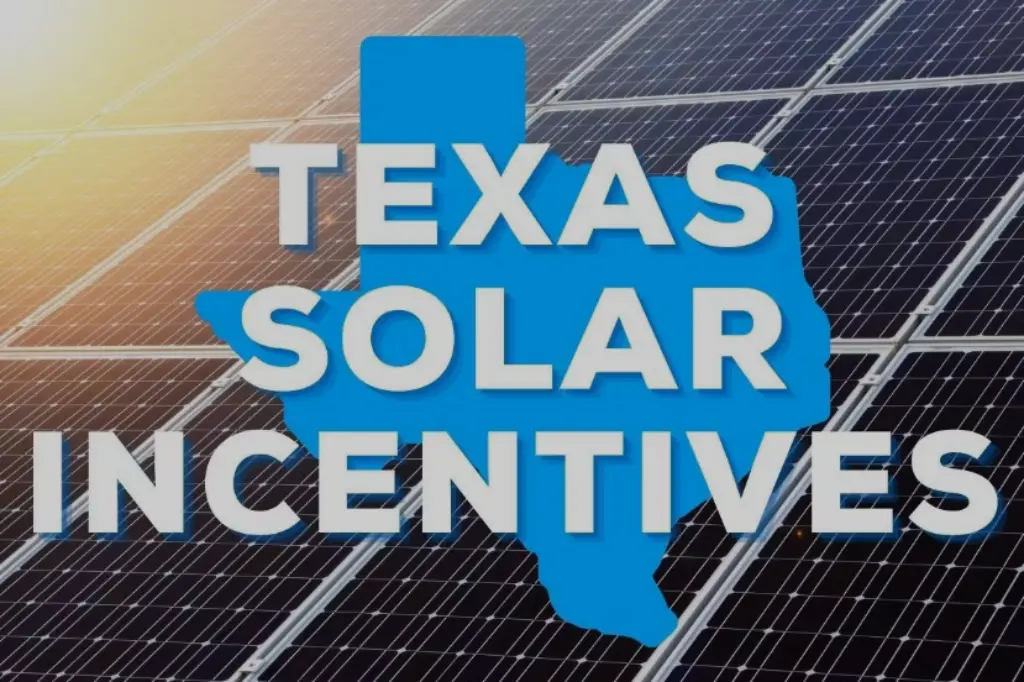Solar energy has become increasingly viable as the emphasis on renewable energy sources grows to fulfill Texas’ expanding energy needs. Texas is the second-largest state in the US and offers year-round sunlight, which makes it a great place to put solar panels. Texas provides various solar panel incentives to entice citizens and companies to embrace this renewable energy option.
The solar in Texas investment tax credit is one of the biggest incentives; it lets firms and households claim a federal tax credit. This incentive allows Texans to afford solar electricity, drastically lowering initial installation expenses. Solar panels in Texas are also exempt from property taxes. Thus, the increased value of the solar panels in Texas won’t result in higher property taxes.
This article will discuss the solar panel incentives that Texas offers and the financial and environmental advantages of switching to solar power. Knowing about these benefits can assist you in deciding to switch to solar power in the Lone Star State, whether you are a company owner or a homeowner.
Solar Power in Texas
Texas is now a leader in the production of renewable energy due to the tremendous rise in solar power in recent years. Texas is renowned for having a large land area and plenty of sunlight, which makes it the perfect place to use solar energy. The state produces around 13.8% of the total in the United States.
Texas has a favorable regulatory framework, one of the main reasons for the solar power industry’s fast expansion. The state has implemented policies and incentives to promote the growth of solar panels in Texas installations. Texas, for example, has a strong Renewable Portfolio Standard (RPS) requiring a certain portion of the state’s power to originate from renewable sources. This need has prompted solar farms and solar panels in Texas installations on residential and commercial premises.

Source: A-Z Animals
Another important element influencing the growth of solar power in Texas is the abundance of sunshine. The state is well situated for solar energy generation since it has 135 sunny days on average each year. The availability of enormous amounts of land and plenty of sunshine have drawn solar companies to construct utility-scale solar farms. The considerable power generated by solar in Texas may benefit the state’s total energy mix.
Solar power’s economic advantages in Texas are notable. The state’s economy has benefited from the many employment possibilities the solar sector has brought. Thousands of Texans have found work in this industry, which includes anything from manufacturing solar panels in Texas to installation and maintenance. Furthermore, solar panels in Texas have drawn capital, promoting the expansion of the local economy.
Benefits of Going Solar in Texas
Texas is poised to become a nationwide leader in solar energy. In the last 10 years, prices of solar panels in Texas have fallen 42% over. Going solar in Texas offers numerous benefits, including:
- Savings of money is one of the biggest advantages of switching to solar in Texas. Businesses and homeowners may cut or even completely eliminate their monthly electricity costs using solar energy. Reducing the dependency on conventional energy sources, solar panels in Texas provide electricity for lights, appliances, and other electrical equipment. Solar in Texas is a financially prudent investment since, over time, the power cost savings may increase dramatically.
- Solar energy doesn’t contribute to air pollution or release damaging greenhouse gas emissions, making it a clean and sustainable power source. By transitioning to solar in Texas, individuals and companies may lessen their carbon footprint and contribute to the fight against climate change. Solar energy conserves water resources as it doesn’t need them like conventional fossil fuel power plants.
- By installing solar panels in Texas, businesses and individuals may increase their energy independence. It is particularly helpful in isolated locations with sporadic or limited connections to the electrical grid. Solar power makes increased energy independence possible, which lessens dependency on conventional energy sources and the resulting price volatility.
- Several governments and municipal bodies provide incentives and tax credits to promote the use of solar energy. These incentives may decrease the initial expenses of installing solar panels in Texas, making the process more reasonable for both companies and homes. To offset their energy bills further, solar panels in Texas owners may sell surplus power back to the grid via net metering schemes offered by certain utility providers.
- The solar in the Texas sector has grown significantly in the last several years, resulting in many work possibilities. By switching to solar power, homes and businesses support the expansion of the renewable energy industry, which boosts economic growth and generates employment in production, installation, and maintenance.
Texas Solar Panel Tax Credit and Incentives
The Texas solar panel tax credit and incentives program is designed to encourage the state’s adoption of solar energy systems. State residents are eligible for several solar in Texas benefits, but most are hyperlocal rather than statewide policies. When comparing Texas solar incentives, it is important to consider the various programs and incentives offered by the state government, utility companies, and local municipalities. Here are a few key factors solar in Texas to consider.

Source: Palmetto
Statewide Solar Incentives
To encourage the use of solar energy, Texas offers several state-wide incentives. Ultimately, the state hopes to lessen dependency on fossil fuels and promote a cleaner, more sustainable energy future by providing incentives to make solar power more accessible and inexpensive:
- Solar property tax exemption. Installed solar energy systems have no property tax applied to their increased value under this scheme. Thus, there will be no extra property taxes due to the increased value of houses or structures with solar panels in Texas installed by individuals or companies. This exemption may make Solar energy system installation much more affordable for many Texans.
- Solar energy system incentives program. Financial incentives are provided under this program for both business and residential solar systems. The size of the system and the quantity of power it produces determine the incentives. The maximum amount per watt for residential systems is $0.60, while for commercial systems, the maximum is $0.50. More Texans are investing in renewable energy thanks to these incentives, which also help defray the initial expenses of installing solar panels in Texas.
- Net metering policy. It enables owners of solar energy systems to be paid for the extra power they produce and return to the grid. In other words, when a solar system generates more energy than is needed locally, it is sent back into the grid, and the owner gets paid for it. The total cost of power can be decreased by using this credit to reduce subsequent energy bills.
- Texas Pace Authority (TPA). It offers funding choices for renewable energy and energy efficiency projects, such as solar energy systems. The TPA makes it simpler for companies and homes to finance solar energy installations by providing low-interest loans that may be repaid over an extended period via assessments of property taxes.
Utility Company Solar Programs in Texas
Texas utility company initiatives encourage conservation, renewable energy, and energy efficiency among its consumers. These solar incentives in Texas aim to minimize energy costs for homes and businesses while positively impacting the environment by reducing energy use.
- The energy efficiency rebate program. It is among Texas’s most well-liked utility business initiatives. Energy-efficient equipment, such as water heaters, air conditioners, and refrigerators, may be installed by consumers, and Texas solar rebates may be earned under this scheme. These subsidies encourage customers who invest in energy-efficient equipment to do so since it lowers their carbon footprint and helps them save money.
- The renewable energy program. It is yet another important initiative provided by Texas power providers. Customers are encouraged by this initiative to produce their power using renewable resources, such as wind turbines or solar panels in Texas. Consumers who generate extra energy may credit their utility bills by selling them to the grid. In addition to encouraging the use of clean energy, the renewable energy program assists consumers in offsetting their power expenses.
Solar in Texas utility providers also provide a range of energy-saving initiatives. These solar incentives in Texas initiatives provide consumers with resources, tools, and energy-saving advice to lower their energy use. One of the biggest electricity providers in the state, Oncor, for instance, has a solar photovoltaic program that gives financial Texas incentives for solar panels and installations on homes and businesses.
Local Municipality Solar Programs in Texas
Solar incentives and programs may be available in some Texas towns and municipalities. These might differ greatly, so finding out what incentives are offered in your region is crucial. The following are some typical program categories that Texas local governments provide:
- Austin energy solar rebate program. The Texas solar rebate offers both business and residential solar systems. Additionally, Austin Energy uses a concept known as a value of solar rate to reimburse customers who feed surplus solar energy into its system.
- Brenham distributed generation program. Under this scheme, you get credits for the excess energy your solar panels in Texas generate on your power bills. Your profits are determined by the wholesale price that Brenham pays its energy suppliers.
- CPS Energy. Database of State Incentives for Renewables & Efficiency states that CPS Energy in San Antonio pays customers back for excess solar energy at a rate it refers to as the “avoided cost rate.” In other words, consumers get credits for extra energy based on the prices CPS Energy would otherwise have to pay for it.
These are just a few examples of the wide variety of programs that Texas’ local governments provide. These initiatives seek to improve citizens’ general well-being while attending to their communities’ particular requirements.
Federal Tax Credits
It is also important to consider federal tax incentives when studying solar incentives in Texas. The federal government offers a Solar Investment Tax Credit (ITC), which provides a tax credit of up to 30% of the cost of a solar energy system. This credit can significantly reduce the upfront costs of installing solar panels in Texas.
The tax credit is nonrefundable, meaning it can only be used to offset the taxes you’d otherwise owe, but extra amounts can be carried over to future tax years. To claim the federal solar in Texas tax credit, taxpayers should file IRS Form 5965, which is easily managed by the best tax software.

Source: Energy Texas
Texas Solar Power Purchase Agreements
As the state looks to diversify its energy portfolio and lessen its carbon impact, solar in Texas power purchase agreements, or PPAs, have garnered a lot of popularity recently. PPAs are long-term agreements in which utilities or big businesses that purchase energy from solar in Texas developers agree to acquire the energy from the developer for a set price over a preset amount of time.
Solar in Texas PPAs provide a consistent and predictable renewable energy supply, one of its primary benefits. Texas has a high power demand, and solar PPAs assist in supplying this need while lowering dependency on fossil fuels. Texas is the state with the biggest energy consumption in the US. Energy purchasers may protect themselves from the volatility of conventional energy markets by locking into long-term contracts that guarantee a set price for solar energy.
Flexibility is yet another important benefit of solar in Texas PPAs. Buyers may customize their energy needs by setting or varying a price, specifying energy capacity, or using a mix of solar panels in Texas and other renewable sources. Purchasers may benefit from future solar in Texas technology advancements by including clauses enabling technological updates in their PPAs.
Solar in Texas PPAs are economically advantageous to the state. The construction and management of solar power facilities boost local economies, attract investment, and generate employment. Moreover, solar in Texas increases energy independence by lowering the demand for fossil fuel imports and keeping energy revenues.
Texas’s move to a cleaner and more sustainable energy future depends heavily on solar PPAs. Together with promoting economic expansion and lowering greenhouse gas emissions, they provide a dependable, affordable, and adaptable renewable energy source. Solar power purchase agreements are anticipated to become more important in Texas’ energy landscape as technology advances and the demand for renewable energy increases.
Conclusion
Lastly, solar energy is essential to supplying Texas’s expanding energy needs. The Lone Star State is leading the way in the renewable energy revolution. Texas leads the world in solar energy generation because of its plentiful sunshine, supportive regulatory environment, and generous subsidies. As the RPS requires a program demonstrating the state’s commitment, a large portion of electricity must come from renewable sources.
Numerous state and utility companies, local governments, and ITC programs are among the solar incentives that Texas provides. In addition to helping the environment by reducing carbon footprints, moving to solar power in Texas has financial advantages such as cheaper energy prices and possible revenue via net metering. With a steady and adaptable supply of renewable energy, solar in Texas PPAs help the state move toward a greener future.
- Top Solar Companies in Clemmons, North Carolina
- Smart Energy Today review
- SunPower By EsaSolar review
- Top Solar Companies in Fort Mill, South Carolina
- Blossom Solar review
- Top Solar Companies in Seymour, Indiana
- Top Solar Companies in Peetz, Colorado
- Premier Solar NW review
- Top Solar Companies in Hartford, Connecticut
- EIS Solar review
- Top Solar Companies in Roswell, New Mexico
- Top Solar Companies in Mundelein, Illinois
- Top Solar Companies in Century, Florida
- Texas Solar Professional LLC review
- Top Solar Companies in Ottumwa, Iowa
- Arizona Wholesale Solar review
- Top Solar Companies in Lake Forest, California
- Top Solar Companies in Clearfield, Utah
- Top Solar Companies in Callahan, Florida
- Top Solar Companies in Port Arthur, Texas






